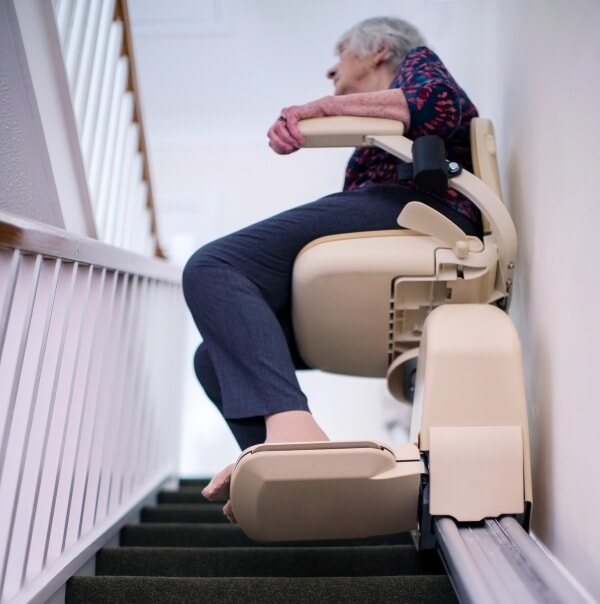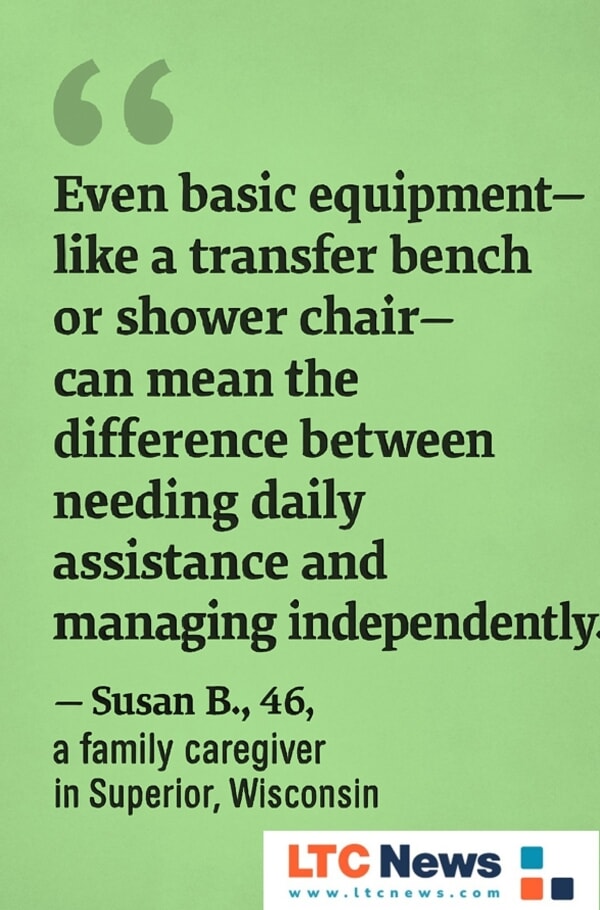How the Right Medical Equipment Can Help You or Loved One Stay Home Longer

You want to stay in your home as long as possible. Or maybe you’re trying to help an aging parent do the same. But as chronic illness, mobility challenges, dementia, or simple frailty set in, safety and independence become harder to maintain without help.
For millions of Americans, the right medical equipment makes the difference between living at home and moving to assisted living or a nursing home. Whether you're recovering from surgery or managing the long-term effects of aging, home medical equipment can delay institutional care—sometimes for years.
More Years, More Need
Longevity is a gift, but it brings new challenges. According to the U.S. Department of Health and Human Services, about 56% of Americans over age 65 will need some form of long-term care, often for three years or longer.
Of those, many will receive paid care—often starting at home before transitioning to a long-term care facility like assisted living.
And this isn’t just for the very old. Chronic illnesses such as Parkinson’s disease, COPD, and Alzheimer’s can begin earlier and progress slowly, making aging in place more complex, but still possible.
However, the implications of long-term care often include both financial strain and physical stress on loved ones. With the right equipment and compassionate, well-trained caregivers, staying at home can offer you or a loved one a higher quality of life—even in the face of health challenges and the effects of aging.
The goal for most people is to maintain dignity, preserve independence, and enjoy the comfort of home. Unfortunately, many assume a nursing home is the only option. The good news is that most long-term care is actually provided at home or in assisted living settings. With the right tools and support, more people can remain at home—if that’s where they want to be.
Equipment That Keeps You Home
Selecting the essential medical equipment for aging in place can also help you make informed choices. Choosing the right equipment is about more than convenience—it’s about safety, health outcomes, and reducing the burden on caregivers. Below are the most essential categories of home medical equipment that allow aging adults to remain at home longer.
Mobility Aids
When walking becomes a risk, falls become a threat to independence.
Common mobility solutions include:
- Walkers and rollators: Provide support and stability. Rollators (with wheels) are ideal for those who can walk but need balance support.
- Wheelchairs and transport chairs: Manual and powered options improve indoor and outdoor mobility.
- Mobility scooters: Helpful for those with reduced stamina, arthritis, or mild neurological issues.
- Canes and crutches: Basic support for individuals with minimal instability.
Tip: Look for lightweight, foldable options if space is limited or the equipment must travel.
Beds and Transfer Assistance
Transfers—getting in and out of bed, chairs, or the bathroom—are among the most dangerous tasks for aging adults. Consider:
- Adjustable hospital beds: Provide elevation for sleep, breathing, or pressure relief. Many offer remote controls and adjustable head/foot positions.
- Pressure-relieving mattresses: Prevent pressure sores and improve circulation, especially for individuals with limited mobility.
- Lift chairs: Help with standing from a seated position—ideal for those with knee or hip issues.
- Transfer poles, bed rails, and slide boards: Assist with standing, repositioning, or moving between surfaces.
- Patient lifts (Hoyer lifts): For individuals who are immobile, these devices allow caregivers to transfer safely without injury.
Bathroom Safety
The bathroom is the top location for falls in older adults. Equip it with:
- Grab bars: Installed near the toilet and in the shower.
- Shower chairs and bath benches: Allow seated bathing for safety and comfort.
- Raised toilet seats and commode chairs: Reduce strain for those with joint issues or balance concerns.
- Handheld shower heads: Improve reach and accessibility.
Pro Tip: Occupational therapists can assess your bathroom layout and recommend modifications specific to your home.
Respiratory and Clinical Support
For chronic diseases like COPD or heart failure, these devices support clinical needs at home:
- Oxygen concentrators and tanks: Deliver continuous or pulse-dose oxygen.
- Nebulizers: Convert medication into a mist for asthma or bronchial treatments.
- CPAP/BiPAP machines: Treat sleep apnea and prevent nighttime complications.
- Vital sign monitors: Track blood pressure, oxygen saturation, or glucose.
Some insurance plans may require documentation of diagnosis or a doctor's prescription for coverage.
Medication Management
As medications pile up, mistakes become common. Tools to improve medication safety include:
- Automatic pill dispensers: Dispense correct doses and send reminders.
- Lockable medication boxes: Prevent misuse in households where dementia or cognitive decline is a concern.
- Medication reminder apps or wearable alerts
Choosing Equipment: What to Consider
Get a Professional Assessment
Start with your physician or an occupational/physical therapist. Many home health agencies, like Amanda Senior Care, can identify risks and recommend the most appropriate equipment, not just the most obvious ones. A home safety evaluation can pinpoint potential hazards like poor lighting or stairs.
Plus, if your loved one has a Long-Term Care Insurance policy, don't hesitate to use the benefits immediately. LTC News partners with Amada Senior Care to help you process any LTC Insurance claim at no cost or obligation- Filing a Long-Term Care Insurance Claim.
Prioritize Comfort and Adjustability
Always test or measure equipment before purchase. Look for:
- Adjustable height and weight capacity
- Ease of use and setup
- Warranty and service availability
The best equipment is only helpful if the person using it feels safe and comfortable with it.
Buy from Trusted Sources
Choose reputable medical supply companies—either local DME providers or certified online sellers. Check for:
- FDA registration or Medicare DME accreditation
- Product reviews and safety certifications
- Maintenance and delivery options
Cost and Insurance: What’s Covered?
Medicare:
Covers many durable medical equipment (DME) items if prescribed and deemed medically necessary. This includes walkers, hospital beds, oxygen equipment, and more.
Medicaid:
Varies by state but often includes basic DME. Waiver programs may expand options.
Long-Term Care Insurance:
Many traditional and hybrid policies reimburse for home modifications and medical equipment if part of an approved care plan.
Out-of-pocket options:
HSA and FSA accounts may be used for eligible purchases.
Professional caregivers are often still required to provide help with basic activities of daily living, such as eating, dressing, using the bathroom, personal hygiene, bathing, and medication management.
Having the right equipment is great, but a qualified in-home caregiver is still vital to maintain a better quality of life and safety. You can search for caregivers and long-term care facilities by zip code by using the LTC News Caregiver Directory. The directory has over 80,000 long-term care providers that you can search for at no cost.
Use the LTC News Cost of Care Calculator to understand local home care and facility costs—and how investing in equipment compares to more institutional care.
Supporting the Family Caregiver
There are now more than 63 million unpaid caregivers in the U.S..
Family caregivers are a backbone of our health and long‑term care systems—often providing complex care with little or no training, sacrificing their financial future and their own health, and too often doing it alone. — Myechia Minter‑Jordan, CEO of AARP.
The physical and emotional toll on informal family caregivers is real—and medical equipment can help.
- Lift chairs reduce strain on backs and shoulders.
- Grab bars prevent slips that result in emergency room visits.
- Fall detection systems help caregivers step away without worry.

Share your thoughts and experiences about aging, caregiving, health, and long-term care with LTC News —Contact LTC News.
When Equipment Isn’t Enough
Eventually, some care needs exceed what equipment can handle. But delaying that point for even a few years can:
- Save tens of thousands in care costs
- Extend the time spent in a familiar environment
- Give families time to plan for future transitions
That’s where in-home care and long-term care planning come in. The proper equipment, with qualified caregivers, often delivers the best outcome.
Don't forget to find qualified caregivers by exploring your local options with the LTC News Caregiver Directory, which lists quality providers across the U.S. by zip code.
Final Thought: Independence is an Investment
A grab bar. A lift chair. A pressure-relieving mattress. These may seem like small things, but they add up to real freedom. By investing in the right medical equipment, you give yourself or a loved one the best chance to age in place, safely and confidently.
If you or your loved one wants to stay home, give your home the tools to make that possible. However, be sure to include Long-Term Care Insurance in your retirement plan so you have the tax-free funds to pay for quality caregivers, facilities, and even equipment, so you can safeguard your income and assets and ease the stress otherwise placed on those you love.


